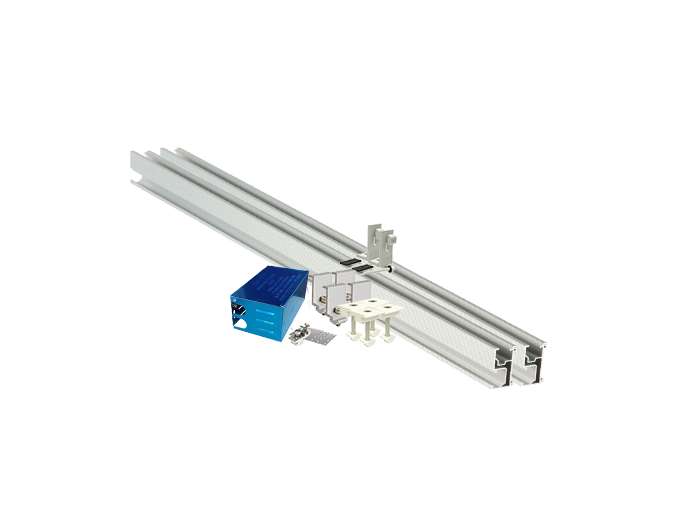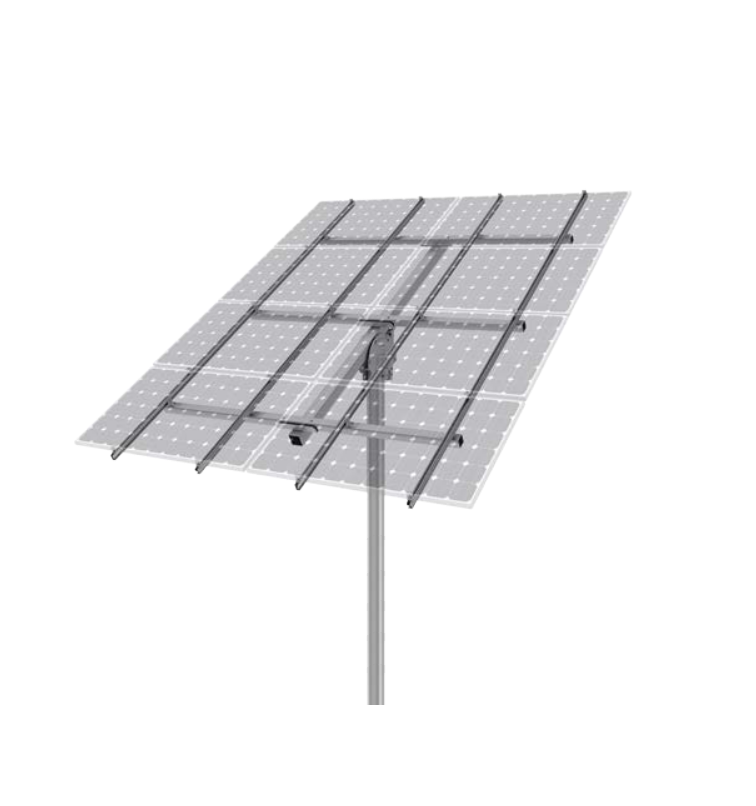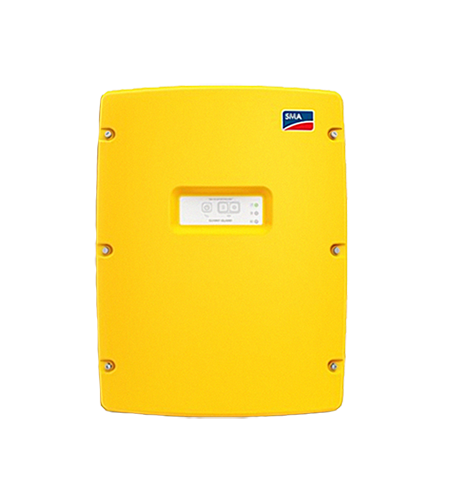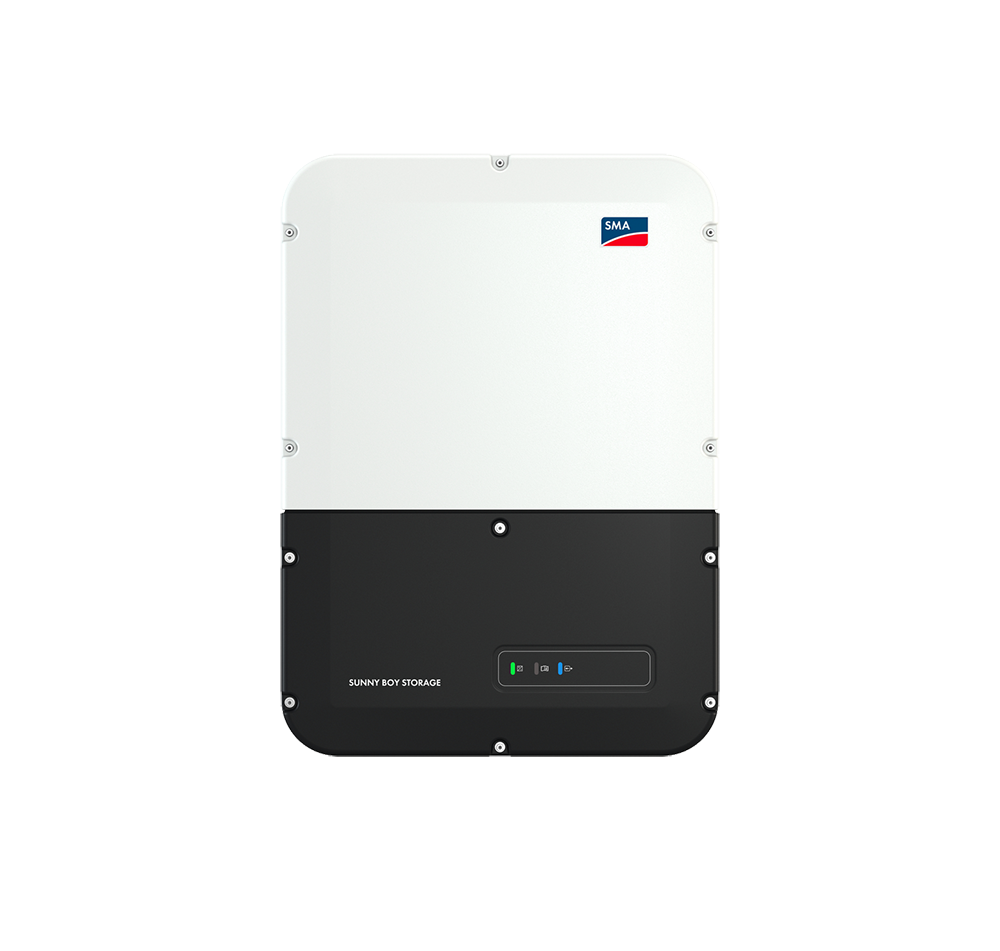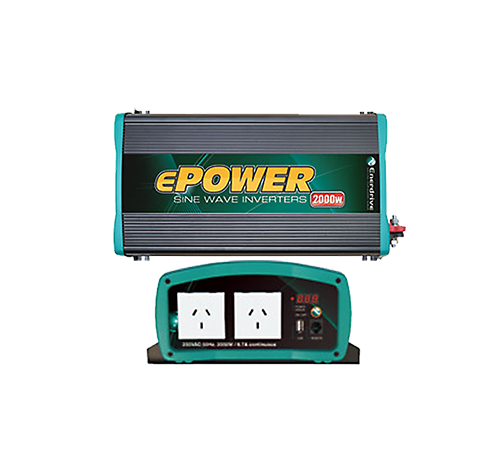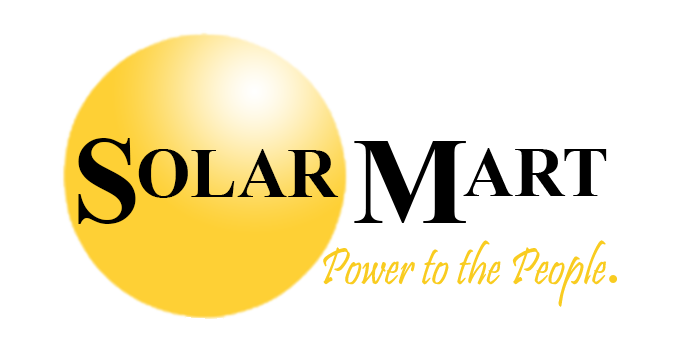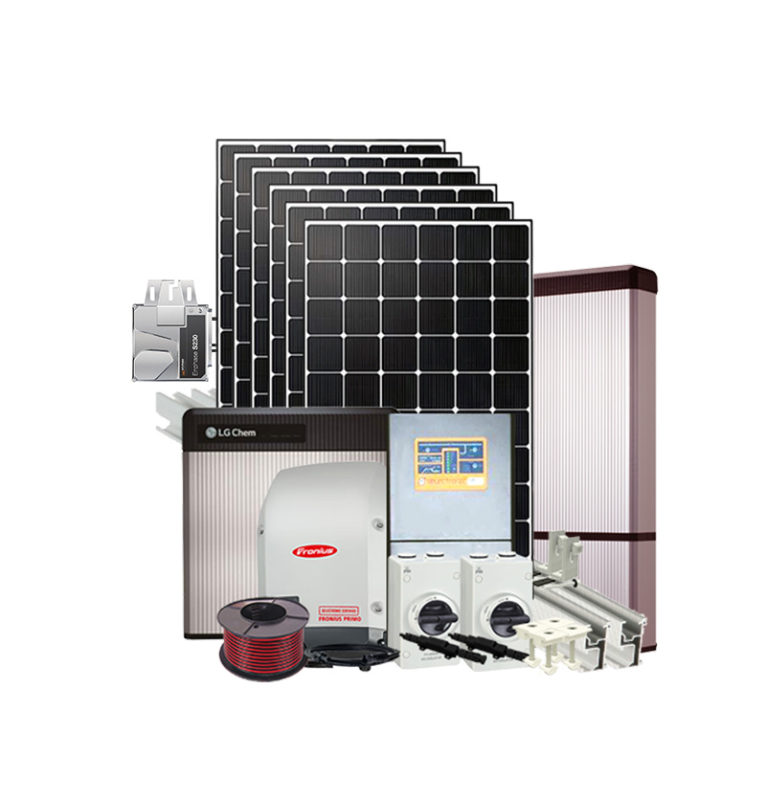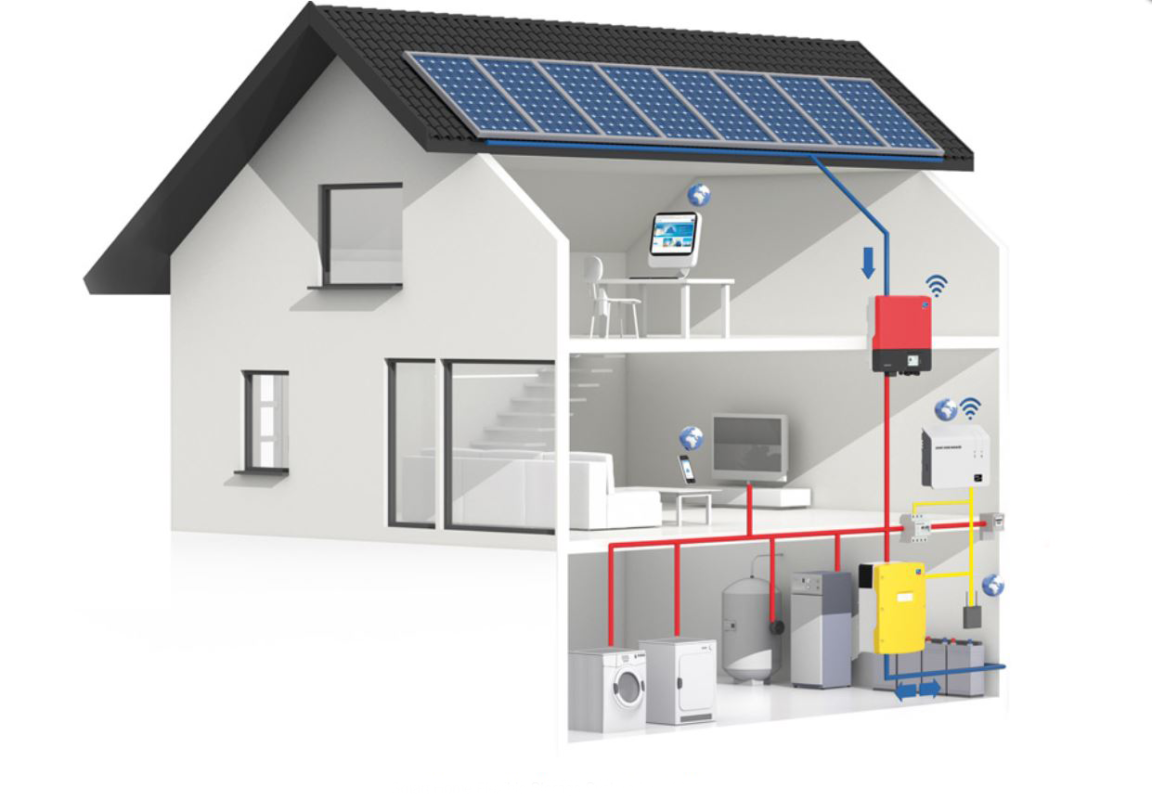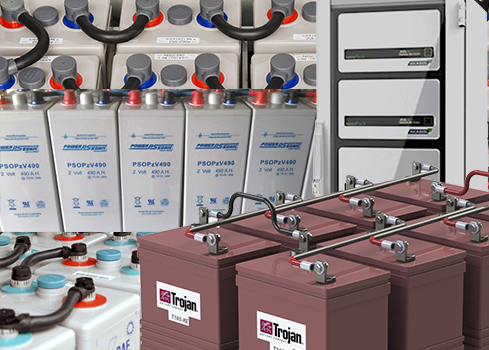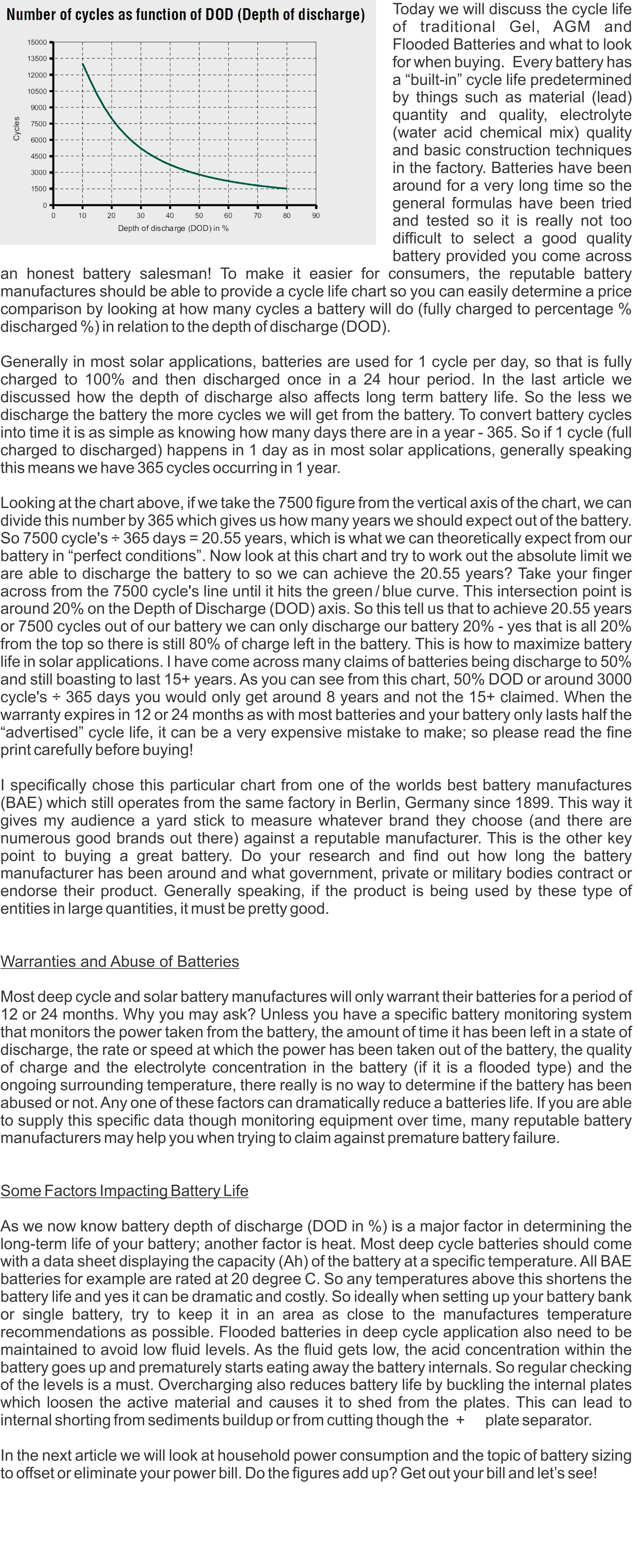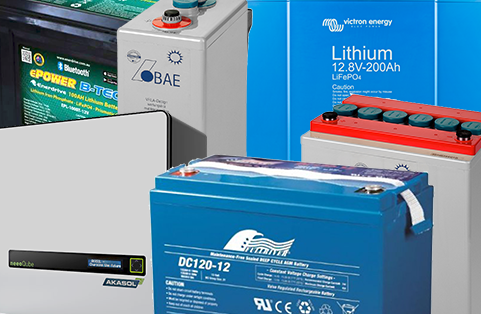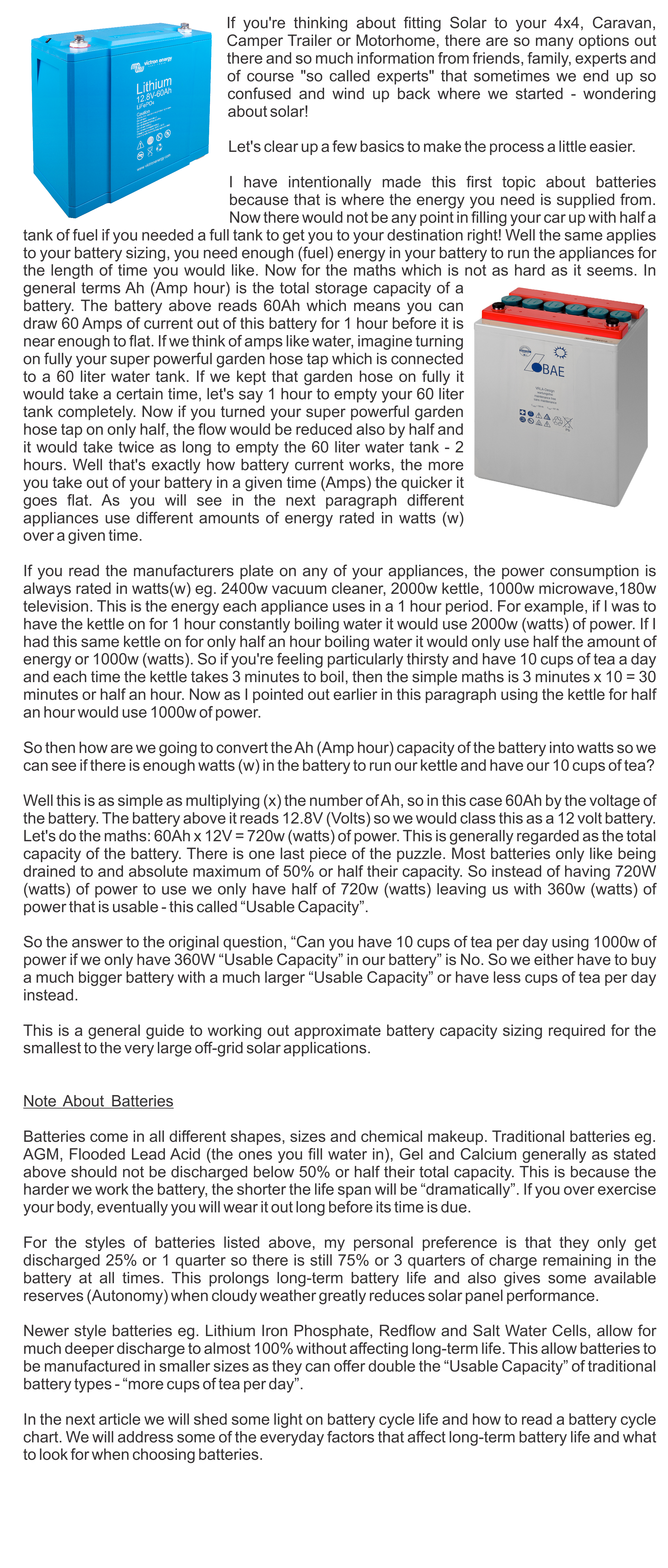 Solar Panels are the lifeline of any Solar System. Without them we would not be able to generate any power at all. Solar Panel come in a 12 Volt Variety which have an VOC (Open Circuit Voltage) of between 19 – 22 Volts – suitable for Camping, Boating, Cabins, Caravans etc. There is also the Grid Connect Variety with a VOC of anywhere from 30 Volts up to 60 Volts which are what we see on our suburban rooftops. In earlier years these house panels were sometimes referred to as 24 Volt Solar Panels. Both the 12 Volt and Grid Connect Panels come in Many Different Power Output Configurations ranging from 5 Watts through to 400 Watts as was recently showcased by SunPower USA.
Solar Panels are the lifeline of any Solar System. Without them we would not be able to generate any power at all. Solar Panel come in a 12 Volt Variety which have an VOC (Open Circuit Voltage) of between 19 – 22 Volts – suitable for Camping, Boating, Cabins, Caravans etc. There is also the Grid Connect Variety with a VOC of anywhere from 30 Volts up to 60 Volts which are what we see on our suburban rooftops. In earlier years these house panels were sometimes referred to as 24 Volt Solar Panels. Both the 12 Volt and Grid Connect Panels come in Many Different Power Output Configurations ranging from 5 Watts through to 400 Watts as was recently showcased by SunPower USA.
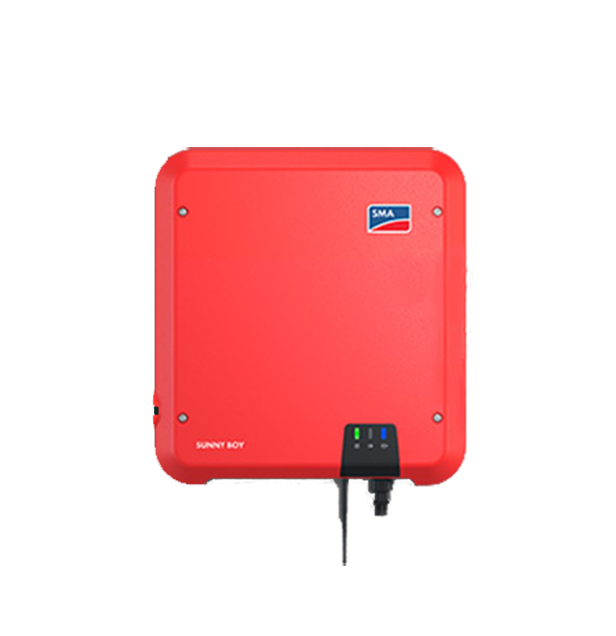
The Solar Inverter to the left courtesy of SMA converts Solar Panel DC Voltage that the Solar Panels creates to usable 240 Volt AC power which is used in our home daily or fed back into the power grid. There are numerous different makes and models on the market that you may have heard of. Some of the more popular brands are SMA, Fronius, Growatt, SolarEdge, ABB, Huawei & Sungrow. You will see Solar Inverters generally mounted near the meter box or inside the garage. Your Solar Inverter will not be able to charge batteries as it converts DC Voltage to AC Voltage where as Batteries require DC Voltage to be charged. In theory you could charge batteries with the DC Voltage coming strait from the Solar Panels however; at between 400 and 600 Volts in a very short period of time there wouldn’t be much of left of our Battery or for that matter the person attempting to make the connect. DC Voltage is far more lethal than AC Voltage!
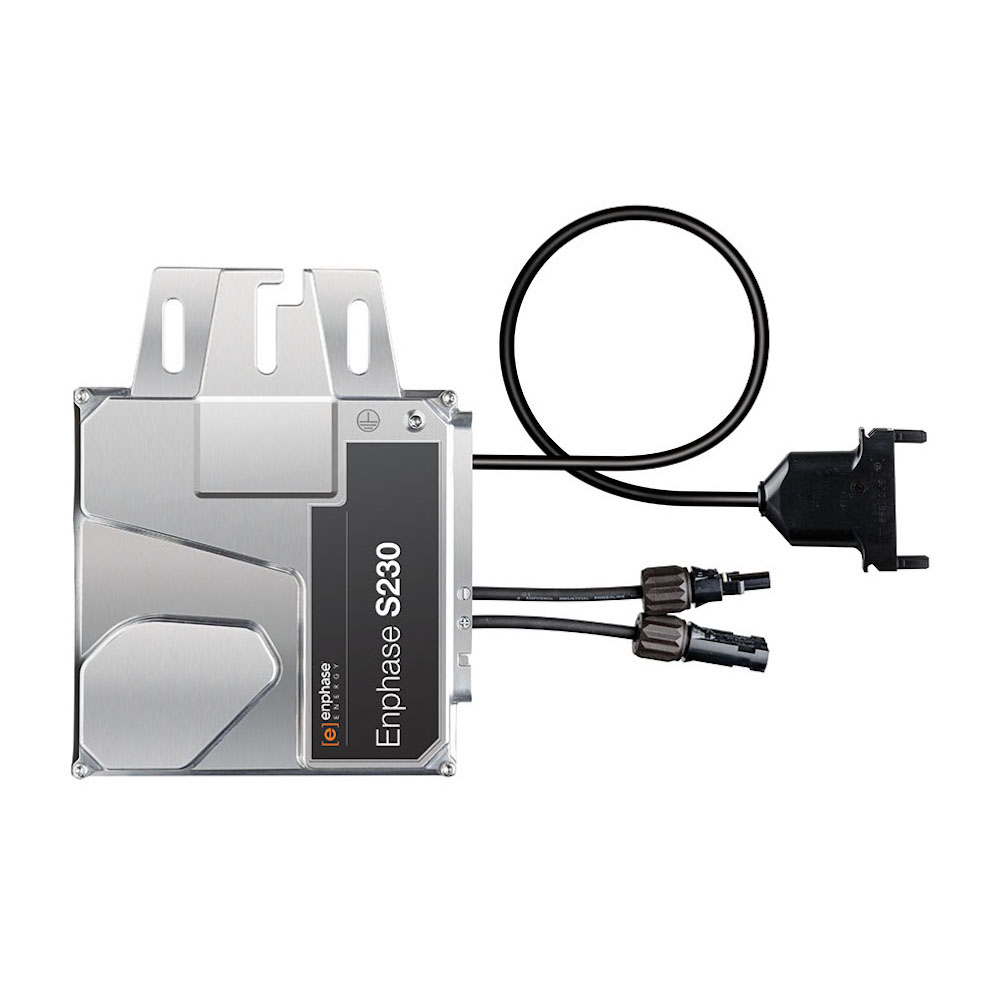 Just a quick note on Micro Inverters. The image to your left courtesy of Enphase is a Micro Solar Inverter and is mounted to the back of each Solar Panel converting the DC Voltage from each Solar Panel to 240 Volts AC Household Power. These systems do have their advantage as each Solar Panel is works as an individual unit so where one Solar Panel is shaded it will not affect the output of the other Solar Panels. On the flip-side there a many units to contend with in a failure situation.
Just a quick note on Micro Inverters. The image to your left courtesy of Enphase is a Micro Solar Inverter and is mounted to the back of each Solar Panel converting the DC Voltage from each Solar Panel to 240 Volts AC Household Power. These systems do have their advantage as each Solar Panel is works as an individual unit so where one Solar Panel is shaded it will not affect the output of the other Solar Panels. On the flip-side there a many units to contend with in a failure situation.
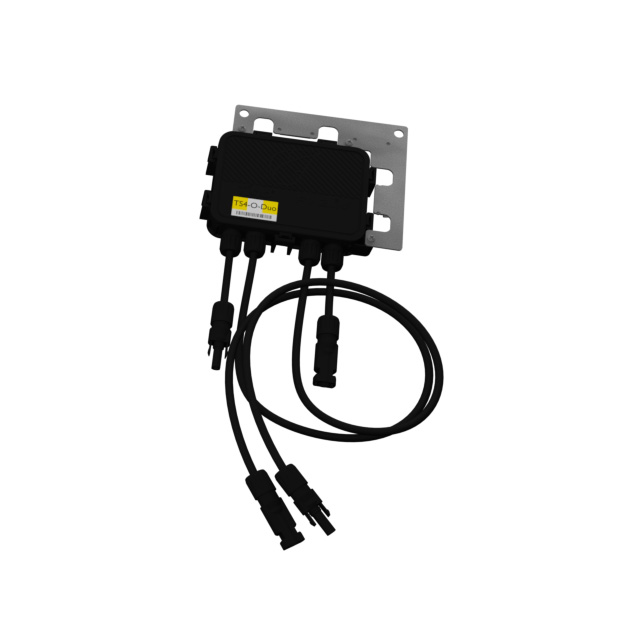 Solar Panel Optimisers. Similar to the ability of Micro Inverters to isolate each solar panel under shaded conditions, Solar Panel Optimisers are the becoming commonplace where shading from trees, buildings and roof fittings such as aerials or chimneys partially shade individual Solar Panels. In the past even one shaded Solar Panel would reduce Solar System Output considerably. The advantage of Solar Panel Optimisers are that they need only to be fitted to the shaded Solar Panel/s and thus reducing costs in compared to Micro Inverters.
Solar Panel Optimisers. Similar to the ability of Micro Inverters to isolate each solar panel under shaded conditions, Solar Panel Optimisers are the becoming commonplace where shading from trees, buildings and roof fittings such as aerials or chimneys partially shade individual Solar Panels. In the past even one shaded Solar Panel would reduce Solar System Output considerably. The advantage of Solar Panel Optimisers are that they need only to be fitted to the shaded Solar Panel/s and thus reducing costs in compared to Micro Inverters.
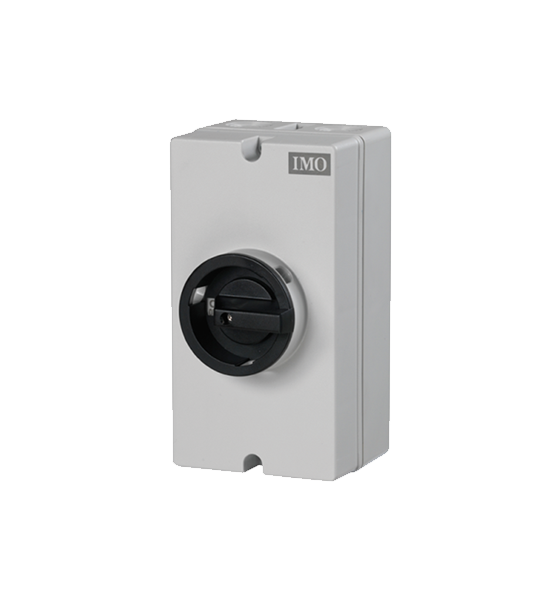 DC Isolators are a safety requirement of all Solar Systems and are generally located beside the Solar Inverter for Solar System serviceability. They are also located on the Rooftop beside the Solar Panels to shut down the Solar Array during servicing and in the unlikely event of a house fire. It is an important note to remember the most Grid Connect Solar Systems generate between 400 – 600 Volts DC; more that enough to cause instant fatality. The introduction of the Rooftop DC Isolator was to protect our Fire Emergency Response Teams when dealing with household fires.
DC Isolators are a safety requirement of all Solar Systems and are generally located beside the Solar Inverter for Solar System serviceability. They are also located on the Rooftop beside the Solar Panels to shut down the Solar Array during servicing and in the unlikely event of a house fire. It is an important note to remember the most Grid Connect Solar Systems generate between 400 – 600 Volts DC; more that enough to cause instant fatality. The introduction of the Rooftop DC Isolator was to protect our Fire Emergency Response Teams when dealing with household fires.
